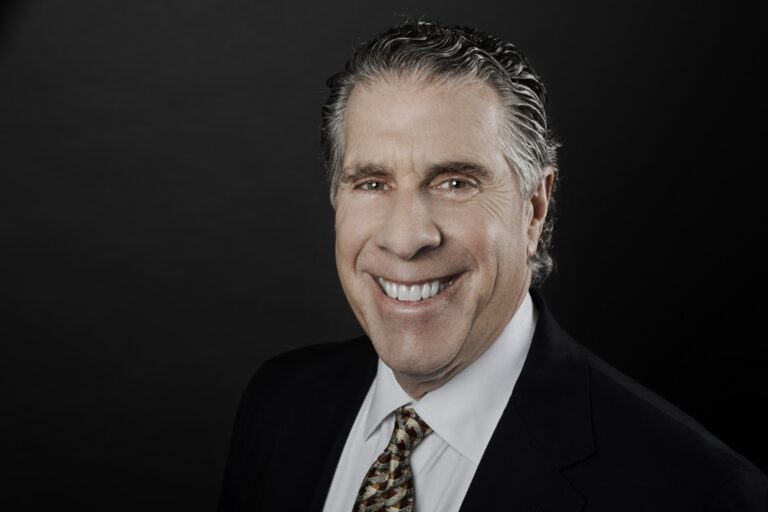by Neil A. Dolgin
Changes in the commercial real estate markets typically develop gradually, then suddenly. Having lived through several recessions and tumultuous markets over the past 48+ years, my experience is that when we see pronounced changes in the economy, the commercial real estate marketplace is generally about six months behind.
We ended 2021 well. The commercial real estate market bounced back in 2021 with $809 billion in sales, but the rise in inflation and higher interest rates this year is really affecting the enthusiasm of buyers and raising new challenges for owners and lessors. It is a far more challenging environment for investment given the higher cost of capital and we’re seeing a slow down in transactions as a result.
We see several mid-size industrial buildings still available that have been on the market since 2021. In some cases the asking prices were too high; an owner had the opportunity to sell a building for $500 per square foot, but decided instead to wait for $550 per square foot. Unfortunately, it’s now a different market now and buyers may only be willing to pay $450.
Did these owners miss the boat by waiting too long? It appears that the wave of buyers willing to spend at the peak of the market, including big brands, funds and REITS, have had their run. So what should owners do?
Some will say, “let’s continue to wait until the sales market gets stronger.” They will hold on to their vacant building and endure the costs of staffing, winter maintenance and annual taxes. Others may take a more creative approach and say, “let’s reimagine the building in more productive ways and put it back on the rental marketplace; once the economy recovers, we’ll reconsider a sale.”
We work with owners of unsold, vacant buildings and we help them to pivot and return their buildings to the market as rentals. Small to large industrial buildings can easily be subdivided into smaller, more marketable units. We work with owners to reimagine their buildings in ways that drive a higher return on investment.
With multiple versus single tenant industrial buildings, owners can reduce their risk when one tenant goes out of business or moves out. If you are renting 4 smaller units and you lose one tenant, you’re still sitting with a 75% occupancy and a 25% vacancy. So you have enough rental income to cover your operating costs.
As more industrial buildings return to market as rentals and as winter approaches, that will favor lessors who should be in a stronger position to negotiate on price. As November rolls around and winter starts to hit, owners often realize that they still have the costs of maintaining and heating their building, repairing sidewalks that crack under ice and snow, and fixing roof problems and lines freezing up.
Prices remain high despite inflation. If interest rates rise again, then that will add additional barriers to entry for buyers. Where cash is king and individual buyers or a group of buyers are able to avoid taking a mortgage, there are likely to be more favorable deal terms for both sides. We may see creative investors asking owners for a purchase money mortgage so they don’t have to deal with a bank that, in the words of one client, “may ask for your first born and the last drop of blood before they give you the money.” This will make it a lot easier for owners to also sell properties and get interest on their money, with the building as a collateral.
According to Commercial Property Executive, “market rents will continue to increase across the industrial sector. Most investors are underwriting 7.0 percent or higher in most markets and anticipate rising rents through 2023.”
As owners seek to cover their bottom line, they still may not see the higher annual rent increases that they expect. A 9% inflation rate creates significant challenges for lessors; we are already hearing about challenges to high annual rent increases among tenants. On the other side, for a tenant, the expense of moving and setting up an industrial business at another location is often far higher than the cost of paying an increase in rent. And if a business becomes a holdover tenant, they’re now going to pay one and a half times the rental. That would also exceed a typical rent increase.
On the retail side, there are still good choices available and we continue to see brisk activity. We advise retail store owners to sign new tenants as quickly as possible because there’s a lot of retail inventory that is still available and lessors can bargain against it. Owners who are still asking higher-end prices for retail locations may have to reconsider or re-evaluate their rentals given the amount of inventory that’s presently on the market.
If you’re looking for a creative solution for improving your return on investment in a vacant building or available rental, we have the right team to meet your needs. Please feel free to contact me here.

Neil A. Dolgin is co-president of Kalmon Dolgin Affiliates. Founded in 1904, Kalmon Dolgin Affiliates (KDA) has grown into one of the New York metropolitan region’s leading commercial and industrial real estate firms. Kalmon Dolgin Affiliates specialize in all aspects of real estate services for developing, managing, selling, leasing and marketing commercial and industrial property. KDA’s highly-trained professional brokers offer clients a practical, street-wise approach to commercial and industrial real estate brokerage, leasing and sales, supported by the latest in real estate marketing, management and research technology.

